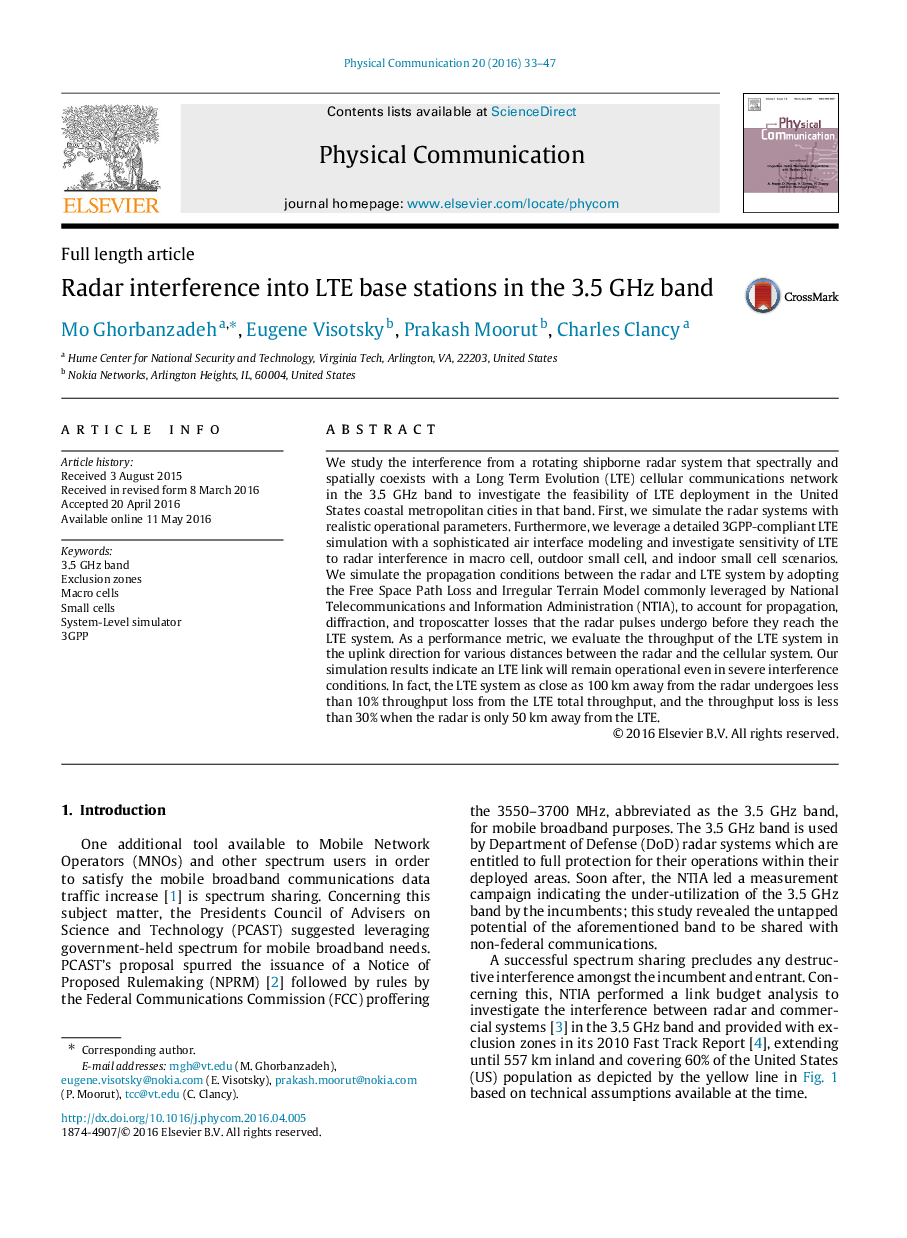| Article ID | Journal | Published Year | Pages | File Type |
|---|---|---|---|---|
| 466261 | Physical Communication | 2016 | 15 Pages |
We study the interference from a rotating shipborne radar system that spectrally and spatially coexists with a Long Term Evolution (LTE) cellular communications network in the 3.5 GHz band to investigate the feasibility of LTE deployment in the United States coastal metropolitan cities in that band. First, we simulate the radar systems with realistic operational parameters. Furthermore, we leverage a detailed 3GPP-compliant LTE simulation with a sophisticated air interface modeling and investigate sensitivity of LTE to radar interference in macro cell, outdoor small cell, and indoor small cell scenarios. We simulate the propagation conditions between the radar and LTE system by adopting the Free Space Path Loss and Irregular Terrain Model commonly leveraged by National Telecommunications and Information Administration (NTIA), to account for propagation, diffraction, and troposcatter losses that the radar pulses undergo before they reach the LTE system. As a performance metric, we evaluate the throughput of the LTE system in the uplink direction for various distances between the radar and the cellular system. Our simulation results indicate an LTE link will remain operational even in severe interference conditions. In fact, the LTE system as close as 100100 km away from the radar undergoes less than 10%10% throughput loss from the LTE total throughput, and the throughput loss is less than 30%30% when the radar is only 5050 km away from the LTE.
